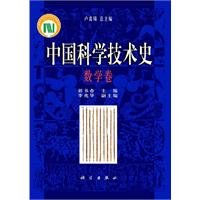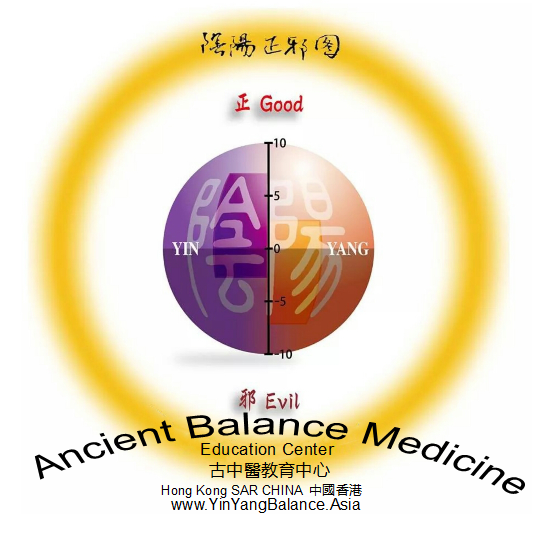
Chinese remainder theorem: the sum of the Construction of Chinese History Timeline(Chinese Edition) 中国剩余定理:总数法构建中国历史年表 ISBN: 9787560350899
2018 March 23DO NOT DELETE
目录
第0章 从“韩信点兵”到“孙子定理”
§1 韩信点兵
§2 物不知总
§3 孙子定理
§4 “百鸡问题”
§5 求五星会合周期的公倍数
第1章 用孙子定理证明若干竞赛题
第2章 话说祖冲之大衍法
§1 秦九韶传承了《缀术》
§2 “大衍求一术”是衍化方阵的方法
§3 连分数与商数列
第3章 从“秦一左表”到“秦一左定理”
§1 更相减损求等数
§2 乘加迭代找乘率
§3 最 佳渐近分数与秦一左定理
第4章 祖冲之用最 佳逼近法开方——开差幂开差立
§1 刘徽的开方术
§2 祖冲之更开密法
§3 用古法解一元二次方程
第5章 祖冲之用内外逼近法求圆周率
第6章 用总数法、消元法解一次不定方程组
§1 从“程行相及”谈起
§2 注释“古历会积”介绍总数法
§3 用消元法(演纪法)求总数
§4 祖冲之的上元积年数
第7章 岁差“治历推闰”交食周期
§1 岁差
§2 “治历推闰”
§3 日月交食周期
第8章 用总数法敲定“五星聚”的真伪
§1 岁星纪年法与岁星超辰
§2 历元定于公元1962年2月5日
§3 249个五星聚为构建《五千年中国历史年表》打基础
§4 “五星聚于房”与武王伐纣
§5 公元前2289年“辰弗集于房”
§6 炎帝“七曜起于天关”在公元前2863年
第9章 万物周期旋转之道
§1 周期运动的轨道方程
§2 万物周期运动的中心力场与势函数
§3 量子数竹与原子结构
§4 万有引力斥力公式的发现过程
第10章 推广到多项式理论
§1 多项式理论中与它相似的定理
§2 交换环理论中的直和分解定理
§3 赋值论中的逼近定理
附录1 五星会合周期Ti的公倍数Ni与Ti的比值表
附录2 位于黄道附近的星宿、星座图
附录3 十二星次及二十八宿与黄道经度对照表
附录4 岁星纪年、干支纪年与公历纪年的对照表五星聚与《五千年中国历史年表》(压缩版)
参考文献
第0章 从“韩信点兵”到“孙子定理”
§1 韩信点兵
§2 物不知总
§3 孙子定理
§4 “百鸡问题”
§5 求五星会合周期的公倍数
第1章 用孙子定理证明若干竞赛题
第2章 话说祖冲之大衍法
§1 秦九韶传承了《缀术》
§2 “大衍求一术”是衍化方阵的方法
§3 连分数与商数列
第3章 从“秦一左表”到“秦一左定理”
§1 更相减损求等数
§2 乘加迭代找乘率
§3 最 佳渐近分数与秦一左定理
第4章 祖冲之用最 佳逼近法开方——开差幂开差立
§1 刘徽的开方术
§2 祖冲之更开密法
§3 用古法解一元二次方程
第5章 祖冲之用内外逼近法求圆周率
第6章 用总数法、消元法解一次不定方程组
§1 从“程行相及”谈起
§2 注释“古历会积”介绍总数法
§3 用消元法(演纪法)求总数
§4 祖冲之的上元积年数
第7章 岁差“治历推闰”交食周期
§1 岁差
§2 “治历推闰”
§3 日月交食周期
第8章 用总数法敲定“五星聚”的真伪
§1 岁星纪年法与岁星超辰
§2 历元定于公元1962年2月5日
§3 249个五星聚为构建《五千年中国历史年表》打基础
§4 “五星聚于房”与武王伐纣
§5 公元前2289年“辰弗集于房”
§6 炎帝“七曜起于天关”在公元前2863年
第9章 万物周期旋转之道
§1 周期运动的轨道方程
§2 万物周期运动的中心力场与势函数
§3 量子数竹与原子结构
§4 万有引力斥力公式的发现过程
第10章 推广到多项式理论
§1 多项式理论中与它相似的定理
§2 交换环理论中的直和分解定理
§3 赋值论中的逼近定理
附录1 五星会合周期Ti的公倍数Ni与Ti的比值表
附录2 位于黄道附近的星宿、星座图
附录3 十二星次及二十八宿与黄道经度对照表
附录4 岁星纪年、干支纪年与公历纪年的对照表五星聚与《五千年中国历史年表》(压缩版)
参考文献
table of Contents
Chapter 0 From “Hanshin Soldier” to “Grandson Theorem”
§1 Han Xin Bingbing
§ 2 things do not know
§3 Grandson Theorem
§4 “The problem of chickens”
§5 Seeking the common multiple of the five-star convergence period
Chapter 1 Proving Some Competition Questions with Sun Theorem
Chapter 2 Saying the Great Descent of Zu Chong
§1 Qin Jiuyi inherited the “Decoration Technique”
§2 “Big Exhortation” is a method of deriving a phalanx
§ 3 consecutive scores and quotient columns
Chapter 3 From “Qin Yi Zuo Table” to “Qin Yi Zuo Theorem”
§1 More derogation loss equal number
§ 2 multiplication plus iteration rate
§3 Best Asymptotic Fraction and Qin Yi Zuo Theorem
Chapter 4 Zuchong’s Use of the Best Approach to Formulation – Opening Power
§1 Liu Hui’s prescription
§2 Zu Chongzhi’s more secret method
§3 Using the ancient method to solve a quadratic equation
Chapter 5 Zu Chong uses the inside and outside approximation method to find the pi
Chapter 6 Solving Indefinite Equations with the Total Method and Elimination Method
§1 From the perspective of “process and phase”
§2 Commentary “Ancient Calendar Convergence” Introduction to Total Number Method
§3 Use total elimination method
§4 Zuo Chongzhi’s Upper Element Accumulated Years
Chapter 7 Precession of the “administrative calendar” delivery cycle
§ 1 precession
§ 2 “Placing the government”
§ 3 day and month food delivery cycle
Chapter 8 Finalizing the “Five Stars” with the Total Method
§ 1 year old star age method and age super star
§2 The epoch is scheduled for February 5, 1962 AD
§ 3 249 five-star gatherings laid the foundation for the construction of a “five-thousand-year Chinese chronology”
§ 4 “Five Stars in the House” and King Wu
§ 5 2289 BC “Chen Fu Set in the House”
§ 6 Yandi “Seven Pillars Began at Tianguan” in 2863 BC
Chapter 9 The Road to the Revolution of Everything
§ 1 orbital equation of periodic motion
§2 The center force field and potential function of the periodic motion
§3 Quantum number bamboo and atomic structure
§4 The discovery process of gravitational repulsion formula
Chapter 10 Generalization to Polynomial Theory
§1 Similar theorems in polynomial theory
§2 The direct sum decomposition theorem in the theory of exchange rings
§3 Approximation Theorem in Assignment Theory
Appendix 1 Ratio of Common Multiples Ni to Ti for the Five-Star Convergence Period Ti
Appendix 2 Astrology and constellation diagrams located near the ecliptic
Appendix 3 Comparison between the 12-star and the 28-sugar and the longitude of the ecliptic
Appendices 4 Years of Age, Years of Ganzhi, and Years of the Lunar Year-by-year Comparison of the Five Stars and Five Years of Chinese Chronology (Compact Version)
references
Chapter 0 From “Hanshin Soldier” to “Grandson Theorem”
§1 Han Xin Bingbing
§ 2 things do not know
§3 Grandson Theorem
§4 “The problem of chickens”
§5 Seeking the common multiple of the five-star convergence period
Chapter 1 Proving Some Competition Questions with Sun Theorem
Chapter 2 Saying the Great Descent of Zu Chong
§1 Qin Jiuyi inherited the “Decoration Technique”
§2 “Big Exhortation” is a method of deriving a phalanx
§ 3 consecutive scores and quotient columns
Chapter 3 From “Qin Yi Zuo Table” to “Qin Yi Zuo Theorem”
§1 More derogation loss equal number
§ 2 multiplication plus iteration rate
§3 Best Asymptotic Fraction and Qin Yi Zuo Theorem
Chapter 4 Zuchong’s Use of the Best Approach to Formulation – Opening Power
§1 Liu Hui’s prescription
§2 Zu Chongzhi’s more secret method
§3 Using the ancient method to solve a quadratic equation
Chapter 5 Zu Chong uses the inside and outside approximation method to find the pi
Chapter 6 Solving Indefinite Equations with the Total Method and Elimination Method
§1 From the perspective of “process and phase”
§2 Commentary “Ancient Calendar Convergence” Introduction to Total Number Method
§3 Use total elimination method
§4 Zuo Chongzhi’s Upper Element Accumulated Years
Chapter 7 Precession of the “administrative calendar” delivery cycle
§ 1 precession
§ 2 “Placing the government”
§ 3 day and month food delivery cycle
Chapter 8 Finalizing the “Five Stars” with the Total Method
§ 1 year old star age method and age super star
§2 The epoch is scheduled for February 5, 1962 AD
§ 3 249 five-star gatherings laid the foundation for the construction of a “five-thousand-year Chinese chronology”
§ 4 “Five Stars in the House” and King Wu
§ 5 2289 BC “Chen Fu Set in the House”
§ 6 Yandi “Seven Pillars Began at Tianguan” in 2863 BC
Chapter 9 The Road to the Revolution of Everything
§ 1 orbital equation of periodic motion
§2 The center force field and potential function of the periodic motion
§3 Quantum number bamboo and atomic structure
§4 The discovery process of gravitational repulsion formula
Chapter 10 Generalization to Polynomial Theory
§1 Similar theorems in polynomial theory
§2 The direct sum decomposition theorem in the theory of exchange rings
§3 Approximation Theorem in Assignment Theory
Appendix 1 Ratio of Common Multiples Ni to Ti for the Five-Star Convergence Period Ti
Appendix 2 Astrology and constellation diagrams located near the ecliptic
Appendix 3 Comparison between the 12-star and the 28-sugar and the longitude of the ecliptic
Appendices 4 Years of Age, Years of Ganzhi, and Years of the Lunar Year-by-year Comparison of the Five Stars and Five Years of Chinese Chronology (Compact Version)
references

Chinese remainder theorem: the sum of the Construction of Chinese History Timeline(Chinese Edition) 中国剩余定理:总数法构建中国历史年表
Author: ZUO QUAN RU . LIU PEI JIE 左铨如
Pages: 154
Genre(s): Mathematics 數學 道象理數 算術
Publisher: Harbin Institute of Technology Press 哈尔滨工业大学出版社
Subject:
Country:
Publication Year: 2015
Editionfalse
Finished? No
Signed? No
Description
目录
第0章 从“韩信点兵”到“孙子定理”
§1 韩信点兵
§2 物不知总
§3 孙子定理
§4 “百鸡问题”
§5 求五星会合周期的公倍数
第1章 用孙子定理证明若干竞赛题
第2章 话说祖冲之大衍法
§1 秦九韶传承了《缀术》
§2 “大衍求一术”是衍化方阵的方法
§3 连分数与商数列
第3章 从“秦一左表”到“秦一左定理”
§1 更相减损求等数
§2 乘加迭代找乘率
§3 最 佳渐近分数与秦一左定理
第4章 祖冲之用最 佳逼近法开方——开差幂开差立
§1 刘徽的开方术
§2 祖冲之更开密法
§3 用古法解一元二次方程
第5章 祖冲之用内外逼近法求圆周率
第6章 用总数法、消元法解一次不定方程组
§1 从“程行相及”谈起
§2 注释“古历会积”介绍总数法
§3 用消元法(演纪法)求总数
§4 祖冲之的上元积年数
第7章 岁差“治历推闰”交食周期
§1 岁差
§2 “治历推闰”
§3 日月交食周期
第8章 用总数法敲定“五星聚”的真伪
§1 岁星纪年法与岁星超辰
§2 历元定于公元1962年2月5日
§3 249个五星聚为构建《五千年中国历史年表》打基础
§4 “五星聚于房”与武王伐纣
§5 公元前2289年“辰弗集于房”
§6 炎帝“七曜起于天关”在公元前2863年
第9章 万物周期旋转之道
§1 周期运动的轨道方程
§2 万物周期运动的中心力场与势函数
§3 量子数竹与原子结构
§4 万有引力斥力公式的发现过程
第10章 推广到多项式理论
§1 多项式理论中与它相似的定理
§2 交换环理论中的直和分解定理
§3 赋值论中的逼近定理
附录1 五星会合周期Ti的公倍数Ni与Ti的比值表
附录2 位于黄道附近的星宿、星座图
附录3 十二星次及二十八宿与黄道经度对照表
附录4 岁星纪年、干支纪年与公历纪年的对照表五星聚与《五千年中国历史年表》(压缩版)
参考文献
Language:Chinese.Paperback. Pub Date: 2015-1-1 Publisher: Harbin Institute of Technology Press. Dayan find a technique and total art is the ancestral magic bullet. is astronomical calculation and analysis of the indefinite article founding a small problem in mathematics Theorem series (II) Chinese remainder theorem: the sum of the Construction of Chinese chronology. first author Dayan find a technique and its operator grass transformed into useful Qin a left table. expand Remainder Theorem range of applications. highlighting the best approximation of mathematical thinking. to meet the needs of astronomy. will be on an expanded set of integers solution to the problem than equations with rational range; also describes the open square. solving a quadratic ancient equation. Application of total art to determine a common multiple of the rotation period. the search to two hundred ...
Notes
HK$ Donated by:






 古中醫學會心對心
古中醫學會心對心 微博 炎黃子孫共振中醫
微博 炎黃子孫共振中醫 古中醫教育中心面對面
古中醫教育中心面對面 古中醫教育中心 Our Website
古中醫教育中心 Our Website